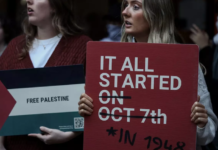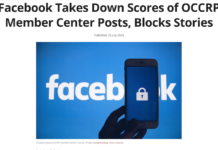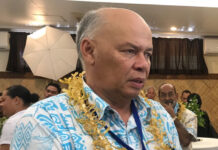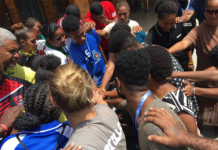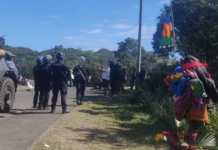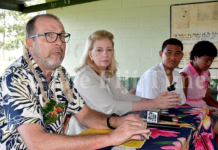
By Imelda V. Abano in Manila
The novel coronavirus now sweeping the globe has left many countries struggling to cope with rising numbers of infections and journalists grappling with how to best cover this evolving public health crisis.
In addition to questions about how governments, health care systems and individuals are responding to immediate needs, many reporters are also asking how it all got started.
According to the World Health Organisation, there is a high likelihood that Covid-19 is caused by the virus SARS-CoV 2 found in bats. But it might have made the jump to an unknown animal group before infecting humans.
READ MORE: Al Jazeera coronavirus live updates: Italy deaths rise by 756 in one day
This intermediate host could be a wild animal or one whose meat is commonly consumed, the WHO added in a report on its website.
Inconclusive research that has yet to be peer-reviewed has pointed to the pangolin – a scaly, ant-eating mammal highly sought by poachers – as a potential vector, but the actual source has yet to be identified.
Given the lack of information surrounding Covid-19, and the potential for the spread of rumors, the media has an absolutely critical role to play in ensuring people are kept up to date with reliable information on what is a rapidly evolving situation, says Richard Thomas, global communications coordinator for the wildlife trade monitoring network TRAFFIC.
“These days, the world is awash with fake news and false claims, often circulated on social media, and it is down to the trusted media to be a source of accurate information,” he says.
Media development organisations around the world have rushed to combat disinformation around the virus by putting together tipsheets, guides and other resources journalists can turn to for the latest, most accurate information on Covid-19.
That includes Internews, which has partnered with BBC Media Action, Translators Without Borders and Evidence Aid to put together a weekly bulletin with tools to aid newsrooms, fact-check organizations and non-profits in Southeast Asia.
Read more about that effort here.
On March 21, the Center for Media Freedom and Responsibility (CMFR) in the Philippines issued a call for media solidarity on COVID-19, saying that journalists and media outlets should consolidate their efforts to verify and call out mis or disinformation, get behind the stories and investigate as necessary the misuse of funds and resources.
News coverage that provides timely information, guidelines and expert views should be shared by news organisations, giving credit as necessary, to extend the reach of these fact-based reports to a wider audience, CMFR said.
It should also do more than tallying the cases, describing patient profiles and travel histories.
Some stories it suggested:
- Scrutinise the use of funds put toward combating the pandemic. Is the production of test kits ongoing? How well will they be distributed?
- Moving forward, what is being done to prepare other regions, countries, localities to handle the same issues?
This issue calls for reporting through a public health lens, with a particular focus on epidemiology, CMFR said. The media must help the public understand the course of the epidemic and what approaches can help ease the crisis.
Here are a few other tips on how media can focus its coverage in a way that is relevant, accurate and informative.
1. Use clear language, facts to prevent panic
Since first being detected last December, Covid-19 has spread to more than 150 countries, killed more than 29,957 people and more than 634,835 cases have been confirmed, according to the latest data (as of March 29) from the WHO.
These numbers can provoke public anxiety as people watch them escalate, challenging reporters to provide accurate, informed information without generating fear.
“This is really a time to stick to the facts on the severeness of this disease while trying to calm down the public,” Germany-based global health journalist Martina Merten said in a webinar on March 19 about reporting on Covid-19.
“We need to convey to the public that we must not take this situation lightly but at the same time not creating panic.”
She suggests:
- Use relevant facts and figures: Updated tallies of people classified as under monitoring or investigation; cases confirmed by laboratory tests; number of fatalities, even those who recovered from the disease. Reporting this data fully and explaining what each number means is important to keep information in context.
- Keep the state of a country’s healthcare system and the strengths and flaws of the delivery of medicals services in mind when evaluating information and assessing primary health care facilities.
- While this crisis is unfolding at a rapid pace, Merten says, journalists must also
- Avoid using language that scares people, such as plague or apocalypse, or provokes hate or xenophobia, such as China virus.
2. Be precise, even if it takes time
The journalists covering this crisis have become health reporters and disaster reporters overnight, says Yvonne Chua, a veteran journalist and journalism professor at the University of the Philippines.
That makes journalists’ role as “verifiers and sense makers” all the more important, she adds, saying newsrooms need to quickly work to build the understanding of locals journalists so they can cover this crisis most effectively.
“Workshops will help. Watching webinars on COVID-19 helped me understand the virus more. If you don’t understand the topic, it shows. You’ll just end up confusing your reader,” says ABS-CBN News TV reporter Kristine Sabillo.
“I’ve been covering science topics for more than a year, and I realized that scientists have a certain way of speaking. You need to understand that.
“At some points, you need to respect their culture but other times you also need to challenge them. Being aware of the nuances of their industry is crucial in making the topic more understandable to the general public.”
TV journalist Atom Araullo of GMA News says it is important for journalists to have a basic understanding behind the spread of disease, for example, and to know how to interpret data properly.
He also says that when it comes to crisis reporting, accuracy over speed is crucial.
“Journalists have a couple of time-tested ways to verify facts, and this applies to health information as well,” Araullo says. “I think problems occur in the rush to be first, especially in the age of social media.”
Beyond just verifying facts, is ensuring that journalists understand and explain plainly health jargon and statistics, said Palawan News managing editor, Celeste Anna Formoso. Other important skills journalists should develop are knowing how to find reliable experts and humanising stories, she added.
“It is always good to upgrade journalism skills, especially in covering health crises,” says veteran journalist Ellen Tordesillas, president of online news organization VERA Files.” But what is more important is the basic requirement for journalists to be informed of the specific issue that [they are] writing about, with sobriety and sensitivity.”
To help journalists practice accurate, fair and responsible journalism, Internews supported the production of three short videos on disinformation surrounding Covid-19 based on the fact-checking research of VERA Files. It also produced a series of explainers debunking rumors and myths circulating around the pandemic.
Gaea Cabico, a reporter at the Philippine Star Online, says fact-checking is particularly important at a time when misinformation spreads almost as fast as the virus itself.
Her advice:
- Carefully explain why a claim or theory is false. If you find suspicious information, reach out to medical experts.
- Craft headlines with the understanding that people don’t read the actual story so make sure what you’re saying is as accurate as possible.
3. Collaborate
The International Center for Journalists earlier launched the ICFJ global health crisis reporting forum via Facebook with now over 1000 members from across the world. The forum is a space for journalists to connect with health experts, resources and to fellow journalists on all things regarding Covid-19.
In the Philippines, VERA Files and news organisations such as online news website Rappler are part of a collaborative project on debunking false information on Covid-19 run by the Poynter Institute’s International Fact-Checking Network, which includes 48 fact-checking organisations from 30 countries.
Chua, who initiated various journalism fact-checking projects in the Philippines, such as the Fact Raker project from the University of the Philippines’ Journalism Department, said now is also a good time for Philippine newsrooms to collaborate with one another by pooling their fact checks, fact sheets, and explainers in a go-to website, similar to Tsek.ph, a website used to fact-check claims during the 2019 elections.
Collaboration extends to awareness-raising efforts too.
“We believe it is important to streamline information online to make critical, verified updates more accessible,” said Gemma Mendoza, an editor from Rappler. One way they’re doing that is by using common hashtags across newsrooms to make information easier to find. Some of the common terms they’ve agreed up are #COVID19PH, #coronavirus, #COVID19Quarantine, #MMQuarantine, #ReliefPH, #CoronaVirusFacts.
4. Use social media to amplify the truth
One of the most effective ways to combat misinformation online is to amplify the truth across the same platforms, such as Facebook, Twitter and WhatsApp and Viber groups, said Mariejo Ramos, a reporter at the Philippine Daily Inquirer. Journalists can use these platforms to dispute false claims, raise discourse and challenge falsehoods accompanied with links to accurate news articles and official sources of data. Including context in every story is also important, she said.
“Journalists should not use sensationalist language or speculative scenarios that could only elevate fear,” Ramos explains. “Sometimes even information from credible and official sources is unclear, so it’s best to make sure that the information we put out there are being corroborated, [and is] not just assumptions, rumors or unsubstantiated links.”
She says she always makes sure the information she receives is corroborated by local officials.
She and her colleagues have also put up a tracker of confirmed cases, deaths, statements from officials agencies and other trusted data relevant to the virus “so we can easily counter check false claims or inconsistencies from officials themselves,” Ramos says.
The Philippine Daily Inquirer as well released a news report documenting coverage experiences and tips in covering COVID-19 from some national journalists and media organisations.
On the other hand, Sabillo says reporters need to respond to fake news and continue posting relevant and helpful information instead of just promoting their own work.
“Utilization of social media is important at a time when authorities want to encourage social distancing. Turn platforms like Facebook and Twitter into educational channels. Use videos edited in [readers’] language [fun, meme-worthy but intelligent]. Don’t underestimate them,” she says.
5. Think about packaging
To reach a wide audience, Professor Chua recommends creating more mobile-friendly materials, especially now that the use of smartphones is widespread across the Philippines. She also advises journalists to do more explainers in layman’s language, using visuals to explain complex topics, hosting webinars on Covid-19 and creating resource pages online.
“That’s why not only journalists but also newsrooms should learn how to tailor or package their stories for different platforms, says Ramos. Media outlets should think about how stories can gain the public’s attention on social media, how to make headlines clear and accurate, how to make stories more shareable and easier to consume.
To reach younger audiences, Araullo says his news organisation tries to deliver information where the youth is most likely to consume it and to interact with them on social media as well. He says GMA News’s daily digital newscast, Stand For Truth, is made up of young field reporters, which hopefully makes the stories more accessible.
Cabico says they are trying to incorporate more data visualisation in their reporting. Data can give context to stories and help journalists show the big picture, she says, it also makes Covid-19 stories more engaging and relevant.
6. Put safety first and foremost
While the media must respond to urgent and developing news, Formoso emphasises the importance of ensuring that reporters remain safe in doing so.
“We have provided alcohol, face masks and Vitamin Cs. We have sanitized our office and practice social distancing. All interviews are done via phone calls or through Viber, messenger or text,” Formoso says.
To ensure her safety while covering the coronavirus pandemic, Ramos says she always bring a mask and a bottle of alcohol everywhere she goes. She also assesses the situation on the ground, which includes the possibility of exposure to individuals who might have contracted the virus. Many interviews, she says, can be done through phone or video calls.
For local journalists who are covering their communities, distancing can be harder.
As advised by health experts, Formoso requires her team in the newsroom to wear face masks and staying at least a meter away from the interviewee and other journalists when out in the field.
“If possible, adopt teleconferencing and remote ways of gathering data instead of face-to-face engagements,” she says.
7. Let local journalism shine
Covering the unfolding pandemic can be even more challenging for local-level journalists, who have few resources and staff to adequately report on all the ways in which this pandemic will impact their communities.
“Community media, like radio stations, broadcast organizations, are known for sensationalism, blatant breaches of privacy, and inaccuracies in the bid to out-scoop rival stations,” says Lina Sagaral Reyes, a special correspondent from the Mindanao Gold Star Daily. “Reporters from these outfits must exercise caution in their reports, especially when they report live.”
Yet these reporters can also look out for solutions-focused stories by seeing how communities are responding and including the voices of the underprivileged, covering best practices and exploring how local governments are responding.
Restaurants are providing free food to health workers at the regional hospital, for example, or are providing an anchor to a boat that was refused entry elsewhere as community quarantine was enforced, says Reyes.
Carolyn Arguillas, editor of Mindanews in the southern Philippines, says they are working to organise a Covid-19 reporting seminar for provincial journalists to strengthen their health reporting skills.
8. The case of the Philippines
As of March 24, the Philippines has 1075 reported cases of patients found positive for Covid-19, with 68 reported deaths, according to WHO.
President Rodrigo Duterte declared a state of calamity in the Philippines to unlock funds the government could use to respond as cases continue to rise. The entire island of Luzon, where the capital Manila is located, was also put under “enhanced community quarantine” from March 17 to April 12 to stop the spread of infection.
That move restricts public movement to essential activities only, such as buying food, medicine and other essential items. Strict home quarantine is being implemented in all households, mass transportation (trains, buses, jeepneys, tricycles, taxis) is suspended, restaurants have moved to take out only, essential health services are regulated, and there is a heightened presence of uniformed personnel to enforce quarantine procedures.
Jonathan Mayuga, a reporter for the national daily Business Mirror, says that a week before Manila was placed under “community quarantine,” his editor had already issued guidelines discouraging unnecessary field coverage to avoid the risk of being infected.
“Personally, it is a big boost to every reporter’s morale as it is really challenging to go on a field work with the situation at hand, even media are given a special pass to move around the quarantine areas in Metro Manila. We have to adapt our ways of doing journalism looking for ways to reach our sources through online interviews and using other social media networks while working from home,” Mayuga says.
In addition to providing reporters with protective gear, soap and disinfectant, Kathyrine Cortez, a reporter with online news website Davao Today, says media organisations have a responsibility to provide their reporters with hazard pay and should extend free covid-testing for journalists.
They should also ensure that reports have time to rest, re-charge and stay on top of the latest developments, Cortez says.
Imelda Abano is the Earth Journalism Network (EJN) content coordinator for the Philippines and president of the Philippines Network of Environmental Journalists. She is also collaborating with the Pacific Media Centre. This article is republished under a Creative Commons licence.



